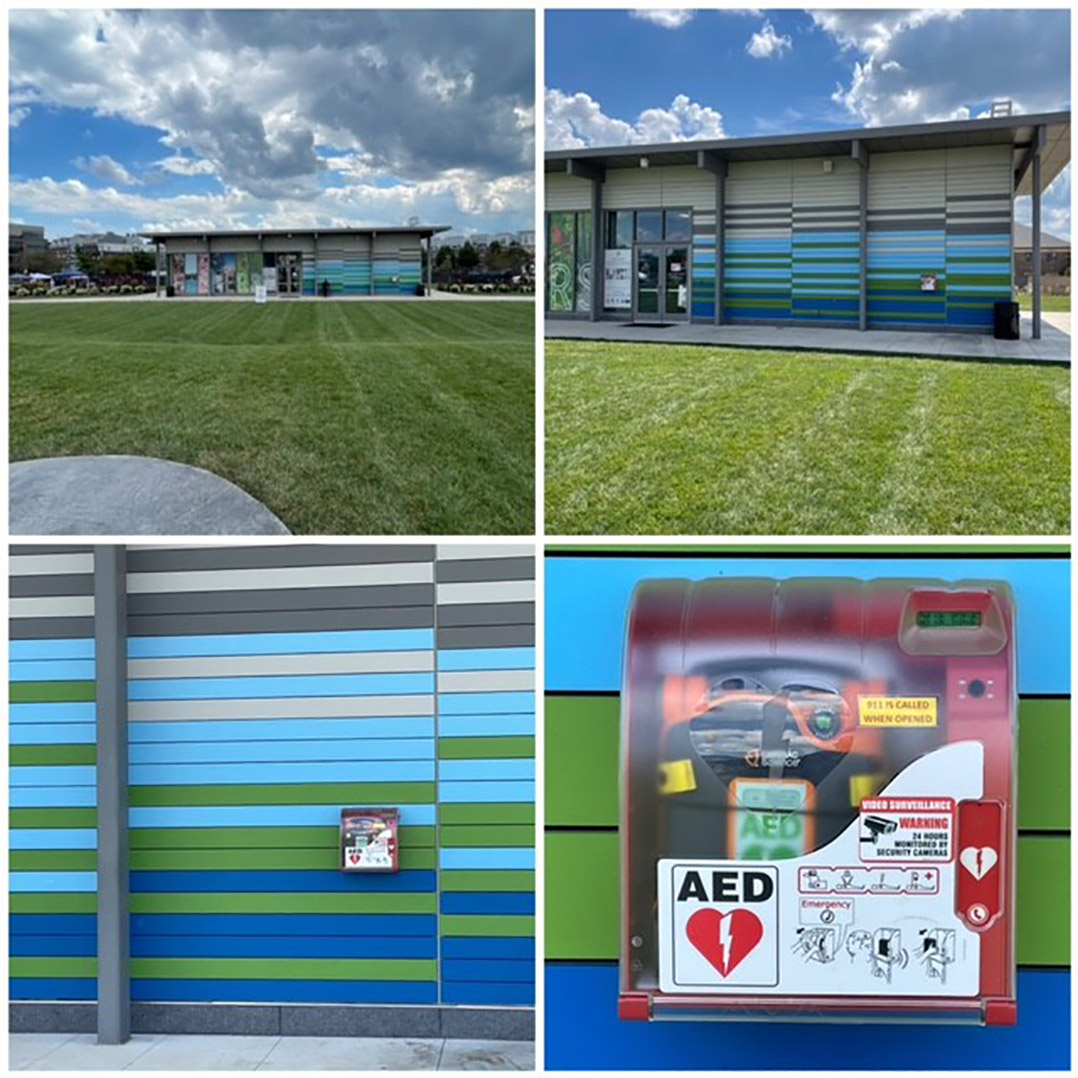
Fishers Fire and Emergency Services has installed the city’s first outdoor automated external defibrillator, or AED, in the Nickel Plate Amphitheater complex. The self-contained unit is mounted on the exterior north wall of the Pavilion building for easy access.
“The addition of this AED is to ensure quick and efficient treatment of someone suffering from cardiac arrest. This AED is designed to be used by the first people on scene during a cardiac arrest,” said Lt. Will Ortiz, deputy public information officer for Fishers Fire & Emergency Services. “It is designed to be used by people with minimal first aid training as it provides easy-to-follow audible instructions.
“As the number of events and crowds increase at the Nickel Plate District complex, we realized the need to have this tool available to the public.”
Ortiz said even though one of Fishers’ fire houses — Station 391 — is part of the NPD complex, the run volume continues to increase and there could be times when firefighters might not be “on station” to respond quickly.
“Research suggests that bystander AED use prior to EMS arrival in public settings is associated with better survival and neurological outcomes,” Ortiz said. “As a result of our city’s population growth and citizens’ continued utilization of its open spaces, we hope to have additional AEDs installed in other locations such as the Nickel Plate trail and parks throughout the city.”
The AED, which is available 24/7 with easy access, provides verbal commands on how to use it. It also connects automatically to the Hamilton County 911 Center, which shortens what the American Heart Association refers to as the “Chain of Survival” by activating the emergency response system.
“This in turn allows for rapid defibrillation by a layperson, which can help restore normal blood flow to the affected victim before EMS arrives,” Ortiz said. “Additionally, when the cabinet is opened, a text alert goes out to our command staff, on-duty battalion chief, safety officer and EMS duty officer to ensure adequate resources are deployed to assist with the medical emergency.”
It is estimated AEDS annually save approximately 1,700 lives. Ortiz said having AEDs in public spaces is literally a “life-and-death proposition.”
“Think about the steps that happen when someone goes into cardiac arrest.,” he said. “First, the victim collapses. Then someone has to get to a phone and call 911. That’s when the response clock begins if there is no AED available. All the bystander can do is perform CPR until fire/EMS arrives. This is good, as CPR can extend the time a patient can survive; but rapid defibrillation with an AED can restore normal blood flow before fire/EMS arrives.”


